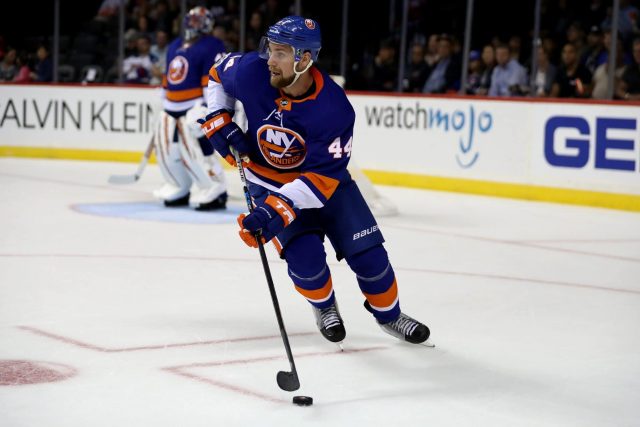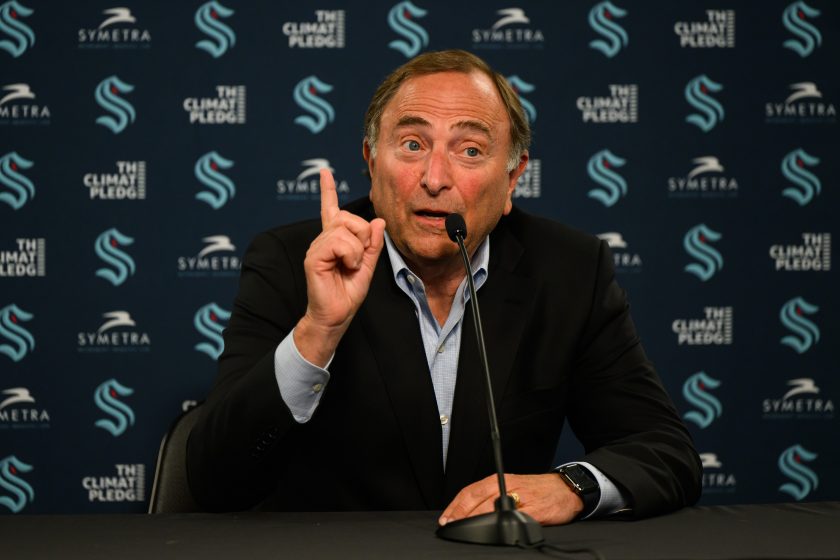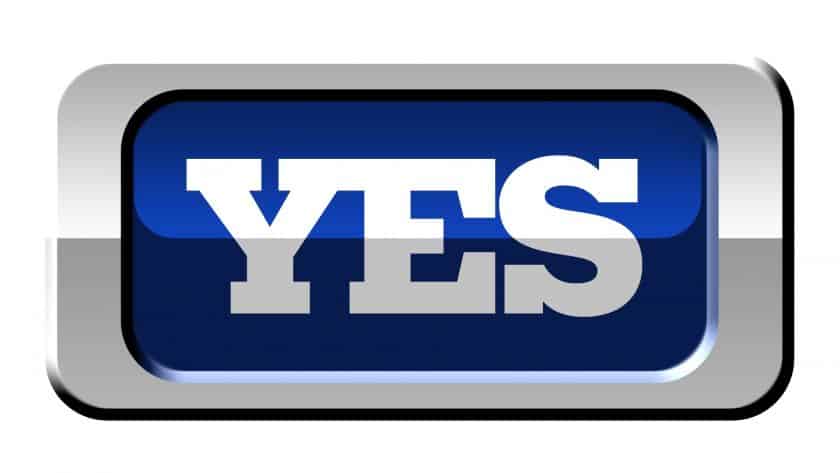Will the Second Defensive Pairing Hold the New York Islanders Back?

The New York Islanders‘ second defensive pairing is not only their most uncertain unit but also their most important this season.
[sc name=”Islanders Center”] [dropcap]I[/dropcap]n the last decade of Islanders hockey, few teams have lived up to the hype. The fanbase has been divided into two unmistakable factions: those with never-ending optimism, and those without it. But this season seems different. For the first time in a long time, there’s hope coming from the least expected places.Let’s get something out of the way first: yes, there is plenty of off-ice hysteria. Between the arena uncertainty and the precariousness of John Tavares’ contract situation, there’s plenty to discuss. But those are long-term obstacles; in the meantime, the Isles have 82 games to play.
Through the first two contests of the season — a 5-0 loss to Columbus and a 6-3 win over Buffalo — it has become abundantly clear that the Islanders have the requisite talent to compete with the bad boys of the Metropolitan Division. Love him or hate him (and most people tend to fall into the latter category), general manager Garth Snow has assembled a squad brimming with playmakers.
Take a quick glance at the roster, and you’ll see a potent combination of agile veterans (John Tavares, Johnny Boychuk and Jordan Eberle), budding youngsters (Joshua Ho-Sang, Mathew Barzal and Anthony Beauvillier) and fringe starters (Scott Mayfield, Adam Pelech and Jason Chimera). Even the coaching staff, retooled after the departure of longtime head coach Jack Capuano, is teeming with refreshing new faces.
But, despite this, head coach Doug Weight’s squad has a lot of fears to quell. Particularly, the Isles’ second defensive pairing, which has featured Calvin de Haan and either Dennis Seidenberg or Pelech, is a big red flag. How this situation is managed can make-or-break the club’s season.
[sc name=”Islanders Link Next” link=”https://elitesportsny.com/2017/10/09/new-york-islanders-vs-st-louis-blues-preview-monday-matinee/” text=”Isles vs. Blues Columbus Day Preview” ]New York’s defense is an intriguing unit. It’s slightly top-heavy, with Boychuk and Nick Leddy, who we noted earlier this year could potentially be a No. 1 defenseman, distinguishing themselves as the only blueliners deserving of top minutes. Snow has constructed a defense corps chock-full of fringe youngsters; budding contributors not yet ready to take on full-time minutes. This makes them perfect for a smaller role.
Which leaves the second pairing as the club’s most consequential. The Islanders agreed to a contract with de Haan right before the two sides were set to meet in arbitration, making it abundantly clear that they had figured out one-half of the equation. The other half, filled to this point by Pelech and Seidenberg, is a little less obvious.
Let’s start with de Haan. The 26-year-old native of Carp, Ontario is a solid puck-moving defenseman with five years of NHL experience. He tallied five goals and 20 helpers last season, which resulted from him joining the rush more often and taking more and more chances. Unfortunately, those added risks also resulted in a lot of blown plays. de Haan isn’t the quickest on his feet, and he was constantly lost in the fray on odd-man rushes.
Last month, Snow told Newsday‘s Arthur Staple that de Haan “played a great two-way game for our team last year” and “was arguably one of our top defensemen.” This, objectively, was true. Travis Hamonic struggled to get going, and none of the other D-men really stood out. But for all of the praise heaped on de Haan this summer, the fact still remains that unless he makes strides in his catch-up game, he’s going to continue to get exposed as he plays more minutes.
The same can be said about Seidenberg and Pelech, two vastly different players who find common ground in their struggles. Both were adequate in limited roles last season; once they started garnering more minutes, their flaws (Seidenberg’s age and Pelech’s lack of) were increasingly shown.
It’s important not to blow this out of proportion: there’s still a very good chance that the Islanders will make improvements in this area, or that at the very least, Snow will make a trade later in the season. But if Doug Weight can’t figure how to make the second pairing gel, it could be a long season, just like so many that preceded it.
[sc name=”Islanders Link Next” link=”https://elitesportsny.com/2017/10/07/casey-cizikas-john-tavares-new-york-islanders-buffalo-sabres/” text=”Cizikas, Tavares Lead Isles To Victory In Home Opener” ]Justin Weiss is a staff editor at Elite Sports New York, where he covers the New York Islanders and Brooklyn Cyclones. In 2016, he received a Quill Award for Freelance Journalism. He has written for the Long Island Herald, FanSided and YardBarker.






